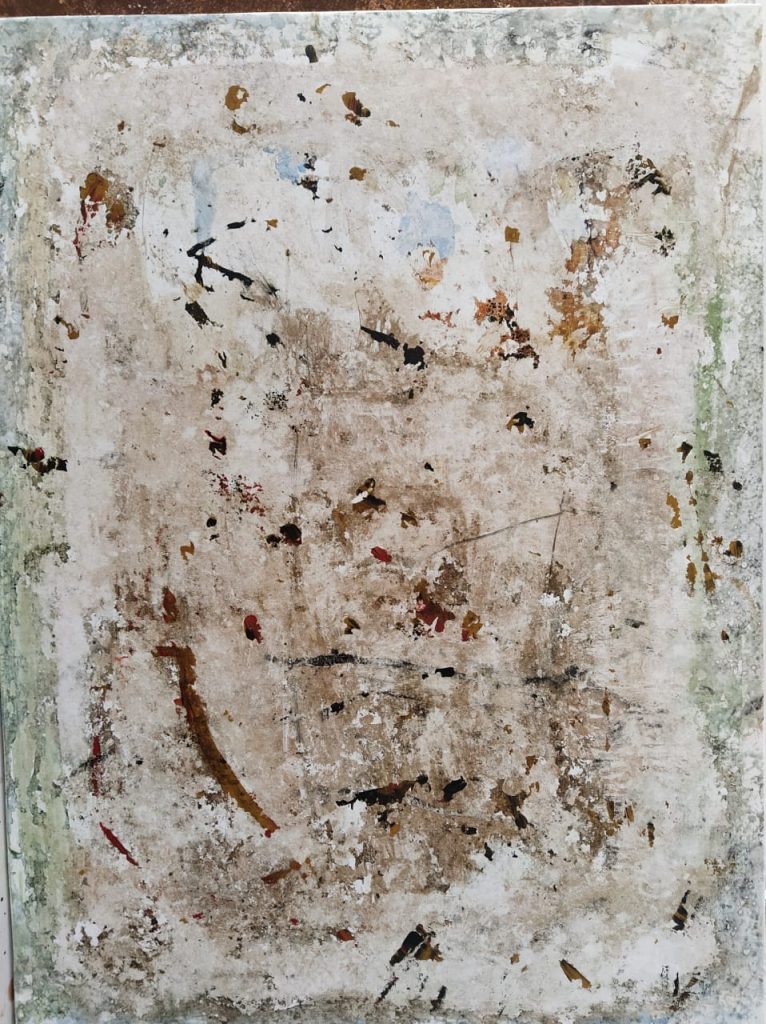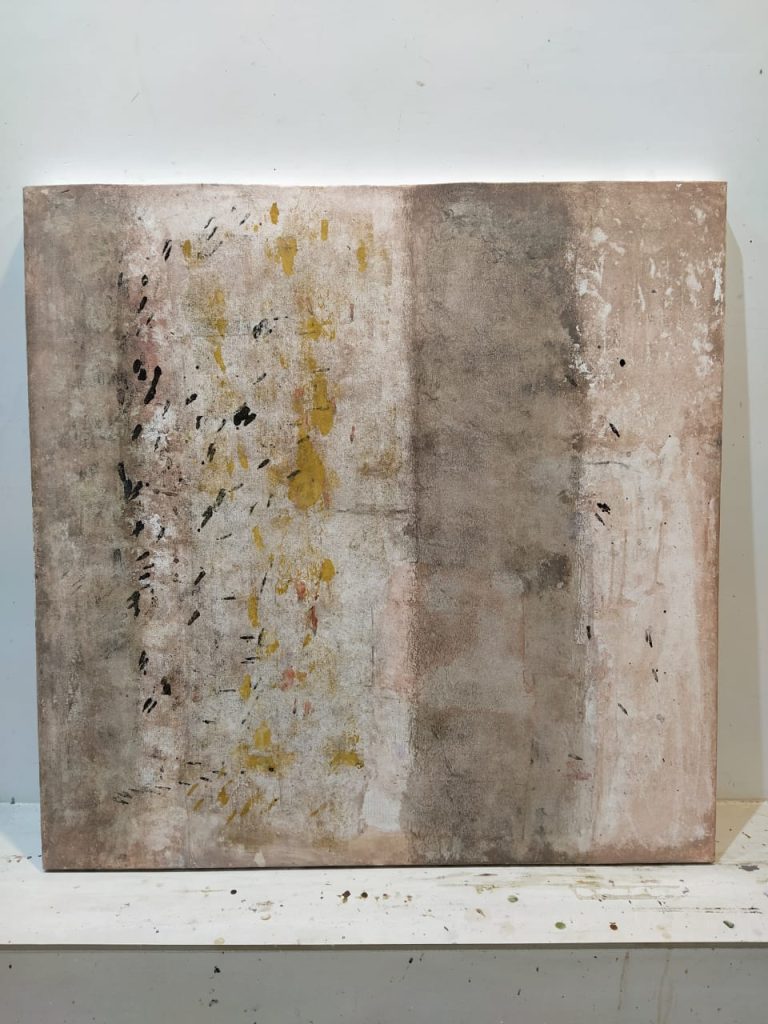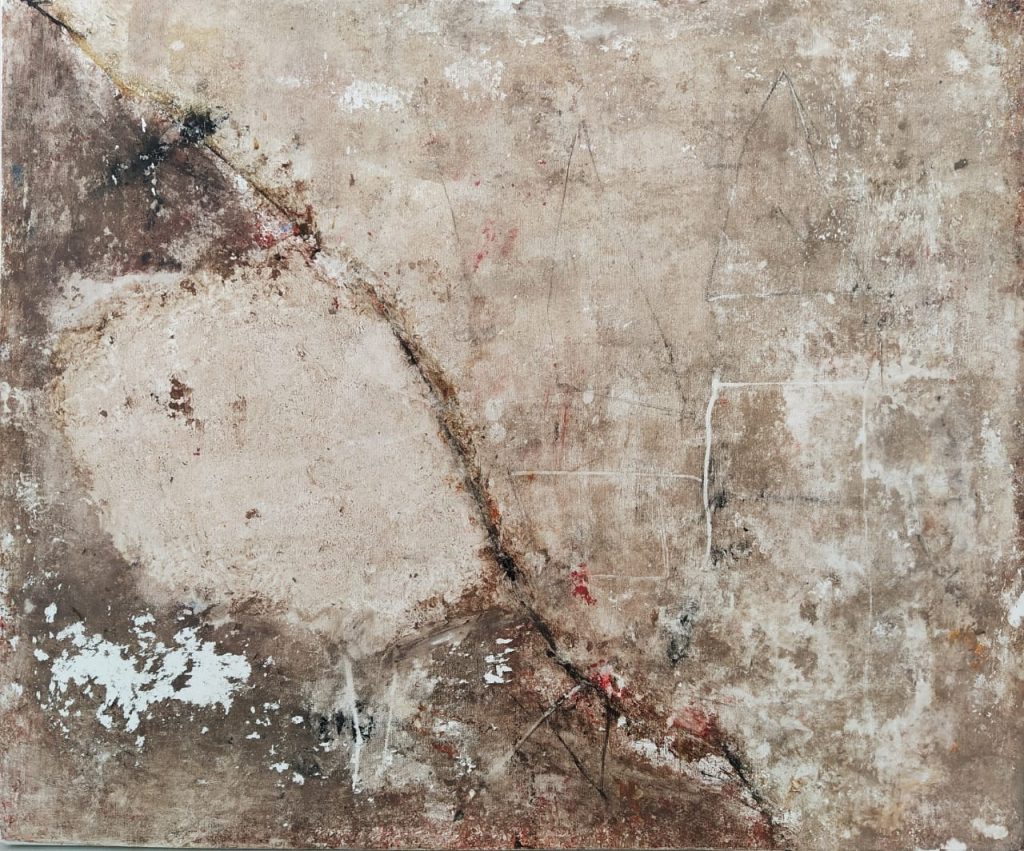Yogendra Tripathi (b. 1965) is an Indian artist who has received his Master’s degree in painting from the Indira Kala Sangeet Vishwa Vidyalaya, Khairagarh, in Chattisgarh. He has held ten one-person shows and more than sixty group shows across India and abroad. Akhilesh Varma, a seasoned and esteemed artist in his own right, offers his perspective on Yogendra’s work. Akhilesh recognises the unique and captivating nature of Yogendra’s artistic creations, acknowledging the depth and significance embedded in each piece. Through his insightful commentary, Varma provides valuable insights into the profound impact and artistic merit of Yogendra Tripathi’s oeuvre. As we look into the world of Yogendra’s artistry, we gain a deeper understanding of the artist’s vision, technique, and the cultural resonance that emanates from his creations.
Yogendra creates paintings with the awareness that what he is creating is not a representational image. He understands the distinction between a scene and a painting, acknowledging that many artists create paintings without intending them to be representational images. However, Yogendra doesn’t know that he knows he is not creating representational images; instead, he understands the process of creating a scene without necessarily making it a visual representation.

Yogendra is not aware that he knows how to create a visual representation, and he is aware that he doesn’t know how the process of creating a painting works. In a way, he unknowingly becomes a part of the process of creating a painting, not actively participating in its formation. He uses himself as a medium, and what he is creating begins to emerge like a visual representation.
Yogendra also knows that what is emerging is not a visual representation, but it is filled with its characteristics, indicating a departure from a traditional scene. The absence of a scene is evidence of its nature as a painting. Yogendra doesn’t follow any specific strategy; he doesn’t consider creating visual representations a lesser experience. Creating visual representations is not inherent in Yogendra’s nature, and he doesn’t make paintings as an excuse to create visual representations.

It’s Yogendra’s compulsion, and he balances his abilities with skill. In this compulsion, Yogendra’s limitations become apparent, showing that he is distant from visual representations. He creates paintings based on his necessity, and if there are elements of a visual representation in the painting, it is the viewer’s limitation. The critic’s bias hides in the viewer’s compulsion.
The absence of scenes in Yogendra’s paintings makes them unique in the world of art. Symbols, signs, and sometimes voids lead the eyes towards visual representation, but their existence distracts him. Yogendra knows that viewers cannot differentiate between a painting and a visual representation, but he also knows that the viewer’s first experience is often with a visual representation.

Yogendra has no intention of including his surroundings in his paintings, but he is also unaware of what is around him. He doesn’t make the painting like a visual representation; instead, he keeps it within the boundaries of a visual representation. The truth of his paintings lies not in the scenes around him but in the experience that arises from being in the surroundings. What is beyond the immediate surroundings, portrayed as a visual representation for years, is an impossible distance in Yogendra’s paintings. This distance is not realistic; it is related to imagination.
These are the places where Yogendra’s paintings reveal signs. In this imagination-dominated transcendental realm, Yogendra transforms his observed experiences. Yogendra’s paintings are a realisation of the unseen, acknowledged as seen. The perceived but unseen is present in the depths of imagination but nowhere in reality. This is where signs become apparent in Yogendra’s paintings. The paintings reflect what is acknowledged but never seen. Yogendra’s artworks are the manifestation of experiences that are accepted as seen but don’t exist in reality.

Born in 1956, is an artist, curator and writer. He has gained worldwide recognition and appreciation for his works through extensive participation in numerable exhibitions, shows, camps and other activities.





